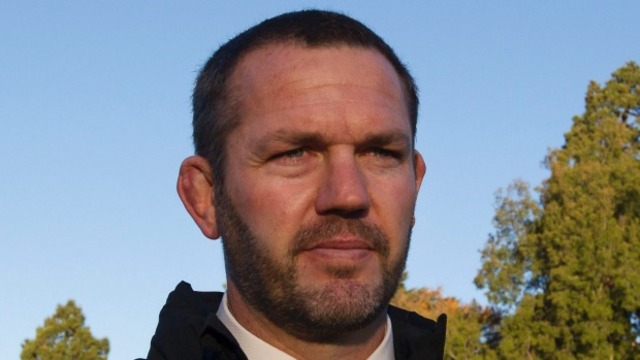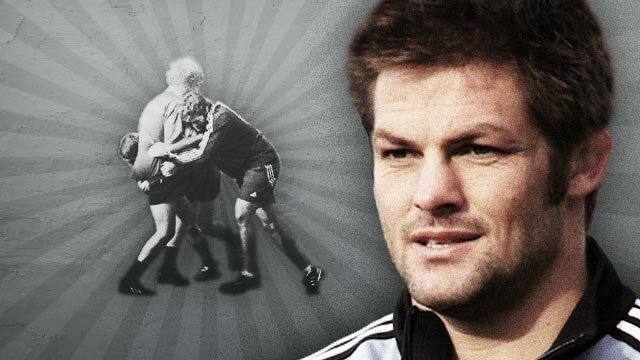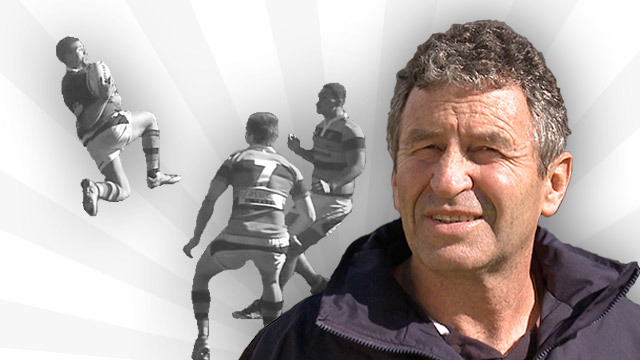Is the full-back position about to get upsized? Part 2
In the amateur era, the full-back position was probably the spot which attracted the biggest athletes in the entire back division: think J.P.R. Williams for Wales, or Gavin Hastings for Scotland. Both J.P.R and Gavin Hastings might well have found themselves converted to the number 12 spot in the professional game. At a lusty 6 foot two inches tall and 95 kilos, Hastings in particular would be ripe for a Jamie Roberts type makeover!
With the pre-dominance of the kicking game – nowhere more so than in the current Springboks world champion team – there is likely to be a movement towards full-backs who offer more physical re-assurance in the air and on the counter.
In this recent article, I illustrated how South Africa like to use all 6 foot 9 inches of second row Eben Etzebeth as the inside pincer of their kick-chase, in order to create maximum physical pressure on the receiver.
That is why New Zealand needed Jordie Barrett’s size and aerial ability under the high ball in their double-header against the world champions:
Barrett makes the catch, and resists the pressure from Etzebeth well enough to present the ball for his half-back on the next play. The Springboks had much more success kicking away from Jordie, and on to his partner in the backfield zone. In the following instance it was New Zealand left wing George Bridge:
View the clip (@1:10 on the reel)
Barrett is on the right, Bridge is on the left, and that is where the error occurs.
Towards the end of this earlier article, I also examined the impact of Jordie Barrett in the current New Zealand attack. As the biggest player in the back-line, he often cuts the hard short-ball angle close to first receiver:
All of this evidence from the Rugby Championship was updated as recently as last weekend, in the game between Wales and South Africa played in heavy rain, and under an open roof at the Principality stadium.
Of crucial importance to the winning outcome for the Springboks was the replacement of their starting full-back Damian Willemse by Frans Steyn as early as the 14th minute of the match. The power of Steyn’s kicking and running game from the back was a major factor in South Africa’s victory, and he rightly won the ‘man of the match’ award.
Even at 34 years of age, Steyn has the power to convert negatives into positives on the kick return:
After dropping the initial kick, Steyn beats all of the first three tackles to set up a positive countering situation for South Africa on the Welsh side of halfway.
In the longer kicking game employed by Wales in the rain, there was usually one ‘flying chaser’, and Steyn was always able to beat the first man:
When the kick returner can move the ball all the way from the side-line into midfield with positive yardage on one phase, it is a sure sign of success for the receiving team. They can kick, or play away through the hands to either side of the ruck on the next phase.
The length and potency of Frans Steyn’s right boot (explored in the partner article) on occasion forced the single chaser to over-compensate to that side:
The threat of the long kick back drags the chase over to Steyn’s right side and opens the path up for a long return by hand instead. South Africa made another clean break and created a clear scoring opportunity on the very next play.
When Wales had success with their kicking game, it was always by kicking away from Steyn. Where the Springboks had found George Bridge as a target in the Rugby Championship, Wales discovered Jesse Kriel on the South Africa right wing:
Unlike Steyn, Kriel cannot fully recover from the initial fumble or beat the first tackler. That commits him to a much flatter line from the side-line into midfield, and Wales are able to flood up and use their momentum on to the ball to win turnover at the ensuing breakdown.
For South Africa, the icing on the cake was Frans Steyn’s long-range goal-kicking. Despite the downpour in Cardiff, it did not stop the Springbok veteran from kicking a goal from the better part of 60 metres:
The trend towards bigger men at the back looks only likely to continue for as long as the atmosphere is raining down high balls on the backfield. Even in England, the incumbent Elliott Daly will probably be replaced by a much bigger man – Leicester’s Freddie Steward at 6 foot 5 inches and 106 kilos – in the build-up to the 2023 World Cup in France. It is a sign of the times.





.jpg)
.jpg)
.jpg)














